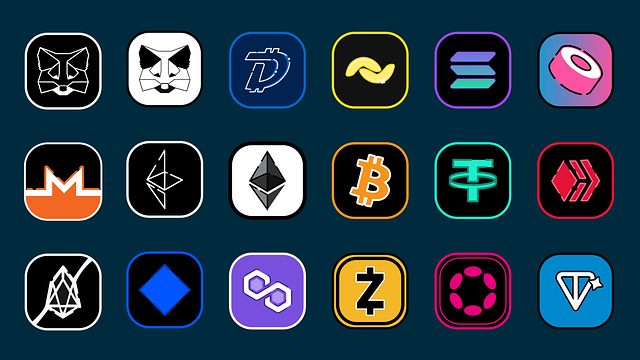Solana, launched in 2017 by former Ethereum developers, is a blockchain platform aiming to revolutionize industry with its fast, scalable, and decentralized architecture. Utilizing unique proof-of-stake consensus and advanced sharding, Solana promises lightning-fast transactions and energy efficiency. The project gained traction through community engagement, open-source principles, and significant growth by 2019, positioning itself as a key player in the cryptocurrency space.
“The Rise of Solana: A Timeline of Key Developments” explores the journey of a groundbreaking blockchain project. From its inception in 2017 by former Ethereum developers, Solana’s vision focused on scalability and decentralized applications (dApps). The network launched officially in 2020, witnessing rapid growth with high transaction volumes and a thriving user base.
Key milestones include the introduction of Proof-of-Stake consensus and strategic partnerships. As we enter 2023, Solana’s community expansion is marked by rising developer activity, mainstream adoption, and its integration into DeFi protocols and NFT marketplaces, solidifying its position in the cryptocurrency landscape.
- Early Stages and Foundation (2017-2019)
- – Solana's inception and founding by a group of former Ethereum developers
- – Release of the Solana Whitepaper outlining the project's vision and technology
Early Stages and Foundation (2017-2019)

In 2017, a new player entered the blockchain space with ambitions to revolutionize the industry—Solana. Founded by a team of seasoned developers, Solana was born out of a desire to create a fast, scalable, and decentralized platform capable of handling high-speed transactions. During this initial phase, the focus was on developing a robust infrastructure that could cater to the growing demand for blockchain solutions. The project gained traction with its unique take on a proof-of-stake consensus mechanism, promising enhanced speed and energy efficiency compared to traditional models.
The early years were dedicated to building a solid foundation, creating a developer-friendly ecosystem, and fostering community engagement. Solana’s open-source nature encouraged contributions from a global network of developers, leading to rapid innovation and improvement. By 2019, the Solana blockchain had already laid the groundwork for what would become a significant player in the competitive world of cryptocurrencies, setting the stage for future growth and adoption.
– Solana's inception and founding by a group of former Ethereum developers

Solana, a groundbreaking blockchain platform, emerged in 2017 with a vision to address some of the industry’s inherent limitations. Founded by a group of former Ethereum developers, it was birthed out of a desire to create a faster, more scalable solution for smart contracts and decentralized applications (dApps). The team recognized the need for a blockchain that could handle high transaction speeds without compromising security or decentralization.
This new venture aimed to solve the issues of slow transactions and high fees prevalent in Ethereum at the time. By leveraging advanced sharding and proof-of-stake consensus mechanisms, Solana promised to deliver lightning-fast transactions and energy efficiency. The project quickly gained traction within the crypto community, attracting a dedicated following and substantial investments.
– Release of the Solana Whitepaper outlining the project's vision and technology

In 2017, a groundbreaking whitepaper titled “Solana: A High-Performance, Proof-of-Stake Blockchain” introduced the world to a new and ambitious blockchain project. This document laid out the vision for Solana, aiming to address the scalability and speed issues prevalent in existing blockchains. The paper detailed a novel consensus mechanism, utilizing proof-of-stake (PoS), which promised to deliver unprecedented transaction throughput while maintaining security.
The whitepaper’s release sparked curiosity within the crypto community, as it proposed an innovative approach to blockchain architecture. Solana’s developers aimed to create a decentralized network capable of handling millions of transactions per second, making it highly scalable and efficient. This key development set the stage for Solana’s rapid growth and its potential to disrupt various industries, solidifying its place in the ever-evolving landscape of cryptocurrencies.
Solana’s journey from its humble beginnings in 2017 to becoming a prominent player in the blockchain space is a testament to the power of innovative thinking. The project’s success can be attributed to its dedicated team of former Ethereum developers who aimed to create a scalable, high-performance blockchain. With the release of the groundbreaking Solana Whitepaper, the foundation was laid for a new era in decentralized technologies. As Solana continues to evolve, its impact on the industry is undeniable, shaping the future of blockchain and setting new standards for speed and efficiency.








Leave a Reply